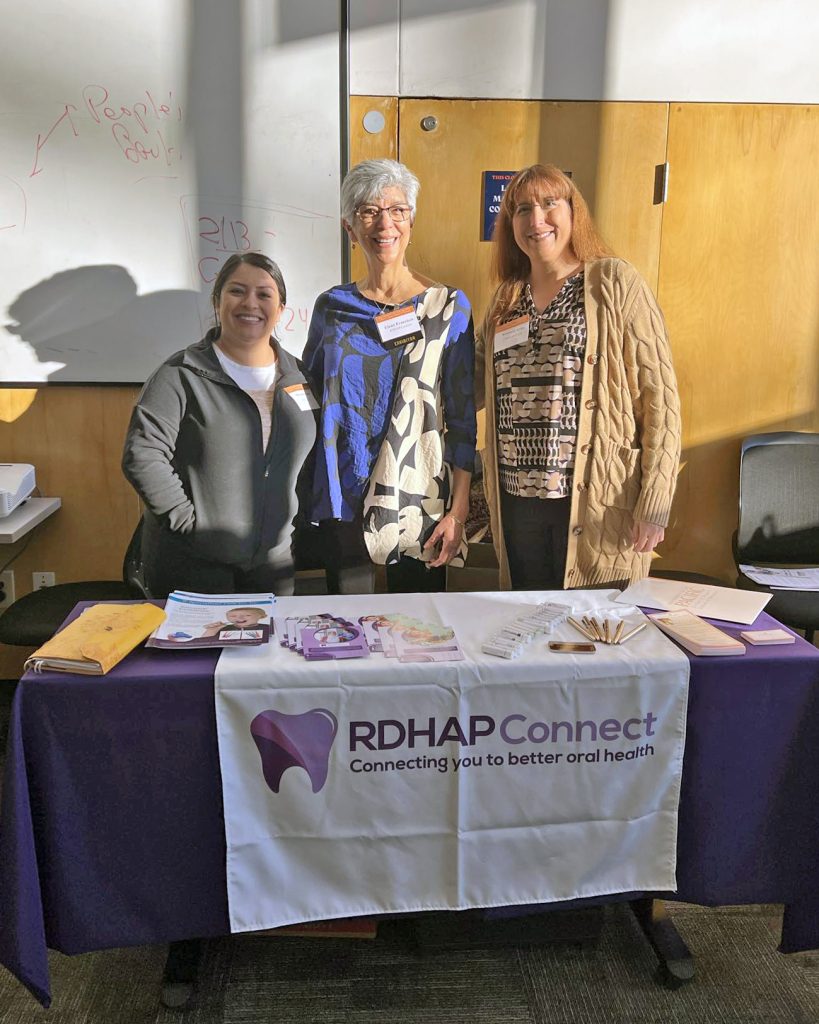On Saturday, February 8, 2025, the University of the Pacific Arthur A. Dugoni School of Dentistry convened a symposium for health care providers on their Sacramento campus about aging and oral health. Full disclosure: I was on the planning committee. At first, I thought it would be a wonderful symposium made up of presenters from different parts of dentistry, sharing the state and future of caring for our aging population.

The symposium proved to be much more. Those of us who are aging will be happy to know experts are busily preparing health professionals, including oral health care providers, to care for the population as we age.
Why do we need new tips and tricks? We know that by 2040, more than 22% of Americans – more than 78 million people – will be over 65 years old*. We are keeping more of our teeth. We are getting more dental implants and crowns. There are fewer dentures being made. All great points, right?
The flip side of that coin is that we are taking more drugs. Most medications have a common side effect of drying out our mouths. Dry mouths are the playground for bacteria that cause tooth decay. We tend to minimize the dry mouth by drinking and sucking on candies, which commonly contain sugar, the favorite food of the bacteria mentioned above.
As a dental hygienist (RDH) who spent most of my career working with older patients, I know that brushing and flossing are more challenging as we age. These folks have more trouble standing at the bathroom sink long enough to brush, floss, and follow all of the other instructions their RDH or dentist give them.
So back to the Aging and Oral Health Symposium. The presenters, not all dentists, shared the lasted data on aging and oral health. They connected it to how we can use this information to make better choices when caring for this population. They discussed collaborating between the professions to best care for the whole patient. The goal for all of providers to help our clients live a healthy life, be able to laugh, smile, talk, and eat comfortably and as pain free as possible.
We were reminded to listen to our patients and offer them all their treatment options. This sounds really simple and something all healthcare providers should be doing anyway, but it was worth the review and sharing that took place in this conference. We can’t wait to get back to our practices and share this information with our teams and patients.
Several Registered Dental Hygienists in Alternative Practice (RDHAP) came to learn. RDHAPs are the dental health care providers specifically trained to provide ongoing oral health care for the aging population who cannot easily visit their dental office for regular preventive dental hygiene care. RDHAP Connect was represented at the symposium, connecting RDHAPs, dentists, and other providers to each other in order to increase access to care for all patients.
There were students – future social workers – who were there to learn and were happy to connect with RDHAPs, find out who we are, the services we provide, and how to find one for a client needing dental hygiene care. Dental hygiene students and dental students came to learn and collaborate, as well.
To summarize, if you are aging, know that we are striving to be sensitive to the increased complexities of our aging population. Providers individualize care for each patient. If you have a loved one who is aging, ask to hear the various alternatives to treating the person and their oral health. In both cases, make sure you understand and are able to make the best decision for yourself, your client or loved one. Know that there are oral health providers, RDHAPs, who can come to your home or bedside if you are disabled, provide preventive care, and collaborate with your dentist to ensure you have the
*https://acl.gov/sites/default/files/Profile%20of%20OA/ACL_ProfileOlderAmericans2023_508.pdf
By Elly Francisco
